The Home Educating Family Association recently published a list of my “top 10” tips for teaching science at home. If you are interested, you can read it here:
Category: Home Education
Another Experiment from Science in the Beginning
As if I have not been harping on this enough, I have a new book out. It’s called Science in the Beginning, and it’s an elementary science course that uses the days of creation as reported in Genesis to introduce scientific concepts. The course is very hands-on, with an experiment or activity in every lesson. One of the homeschooled students who field-tested the course, Ryan McFall, has been kind enough to allow me to show pictures that were taken while he was performing some of those experiments. This one is about diffusion.
First, soak an egg in vinegar for a day or so:
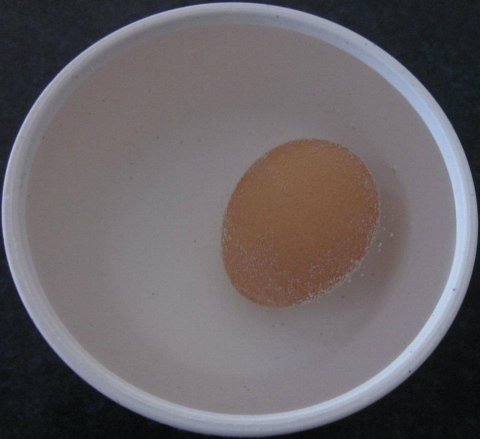
The vinegar will slowly react with the calcium carbonate shell of the egg, turning it into a salt (which dissolves in water) and a gas (which bubbles away). In the end, you are left with an egg that has no shell:
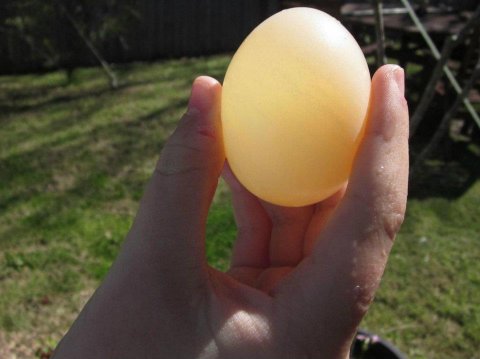
Continue reading “Another Experiment from Science in the Beginning”
An Experiment From My New Book
I have been posting a couple of videos of me doing experiments from my new book, Science in the Beginning. You can find them at the publisher’s YouTube channel. However, one of the Australian mothers who field-tested my book, Jen McFall, posted on her Facebook page some pictures of her son, Ryan, doing a few of the experiments. She has graciously allowed me to use the pictures to show other people how much fun the experiments can be. Here is one about how light can do multiple things when it encounters a new substance:
Step 1: Fill a glass bowl with water:
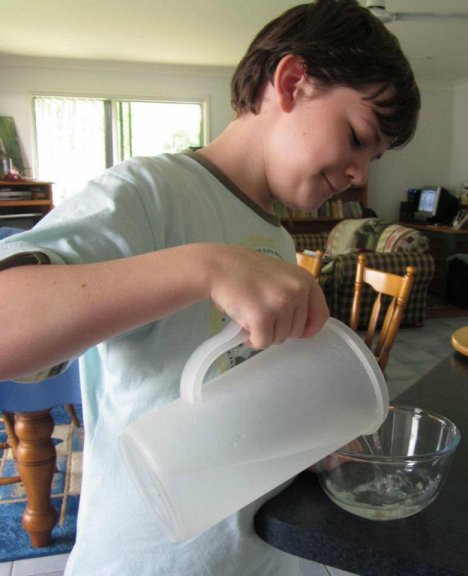
Step 2: Lay a utensil (like a spoon) on the bottom of the bowl:
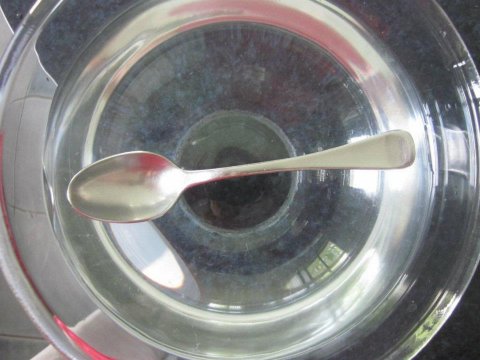
Step 3: Arrange the bowl so it is at the edge of a counter, and then look up through the side of the bowl:
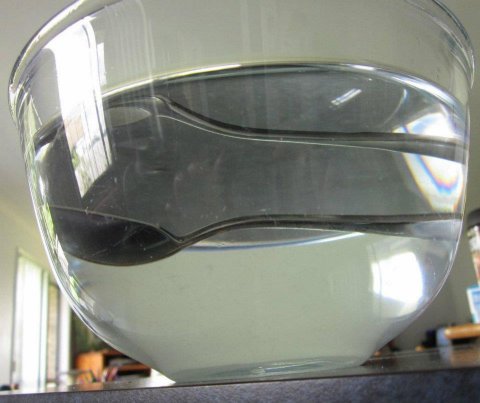
Notice that you see the spoon lying on the bottom of the bowl, but you also see an image of the spoon upside down on the surface of the water! This is because when light encounters a new substance, it can do more than one thing. You see the spoon lying at the bottom of the bowl because light passes through the bowl, passes through the water, reflects off the spoon, passes back through the water, passes back through the bowl, and travels through the air to hit your eyes.
You see the image of the spoon upside down on the surface of the water because light passes through the surface of the water, travels through the water, reflects off the spoon, travels back through the water, reflects off the air at the surface of the water, travels back through the water, passes through the bowl, and then travels through the air to hit your eyes. Nevertheless, when you look straight down into the bowl, you can see the spoon lying there (see step 2). That’s because some of the light passes through the surface of the water, travels through the water, reflects off the spoon, travels back through the water, and passes back into the air so it can travel through the air and hit your eyes.
So in the experiment, you see that when light hits the surface of the water after reflecting off the spoon, it can do two things. (1) Some of it passes back into the air, which is why you see the spoon lying at the bottom of the bowl when you look down at the bowl from above. (2) Some of it reflects off the air so you can see the upside-down image of the spoon when you look through the side of the bowl from below.
Contrasting Schools and Homeschools on College Preparation
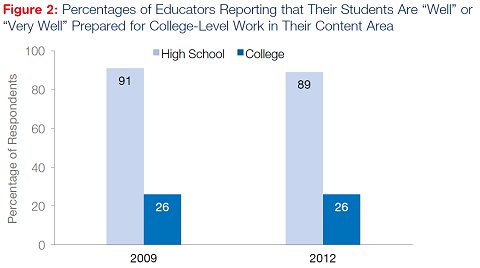
ACT, Inc. is a non-profit organization best known for its standardized college entrance test: the ACT. However, the company does a wide range of assessments for educational institutions, policy makers, and researchers. Every three to five years, they perform the ACT National Curriculum Survey. In this survey, they sample educators at the middle school, high school, and college level, asking them several different questions that are aimed at discovering trends in United States Education. Honestly, I am not all that interested in such reports, but a colleague of mine send me a link to the latest ACT National Curriculum Survey, mentioning the graph reproduced above. I thought it was worth discussing.
In the survey, ACT contacted a representative sample of educators in both public and private educational institutions across the U.S. They received results back from 2,943 high school teachers and 3,596 college teachers. That’s a fairly healthy sample. They don’t go into the details of how they ensured that the sample was “representative,” but let’s assume that their methodology was reasonably correct.
They asked high school teachers how well their students would be prepared for college (in the subject matter they were teaching) after leaving their classes. As you can see, in 2012, 89% said “well” or “very well.” They asked college instructors how well prepared their incoming students were for the classes they were teaching, and as you can see, only 26% answered “well” or “very well.” The numbers were slightly different in 2009, but not significantly so.
While high school teachers think they are providing good college preparation in the courses they are teaching, college instructors disagree. In the end, they find that very few of their students are actually prepared for the classes they are teaching. As the report puts it:
A stark contrast still exists between high school teachers’ perceptions of their students’ readiness for college-level work and college instructors’ perceptions of the readiness of their entering students.
To anyone who has taught at the college level for a while, this isn’t really surprising. Most high school teachers don’t seem to agree with college instructors when it comes to determining how to prepare students for collegiate-level studies.
Continue reading “Contrasting Schools and Homeschools on College Preparation”
Homeschool: The Best Setting to Teach Science
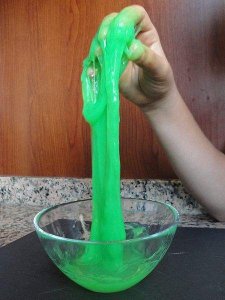
and giving them your E-MAIL address. Don’t worry – they won’t sell your address to anyone.
If you get the eBook, I strongly recommend you read the article entitled “Of Cormorants, Cats, and Kids” by Diana Waring. It is excellent.
The Human Body: Fearfully and Wonderfully Made, Second Edition
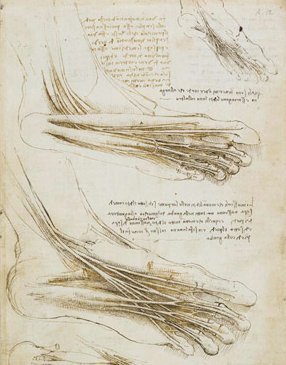
Of course, most textbooks need to be updated from time to time, especially to keep up with advances in the field. For example, when our book was published, scientists weren’t sure what the human appendix did. Many considered it a vestigial organ, but creationists and intelligent design advocates did not. As a result, the best we could write at the time was that the function of the human appendix was unknown. Several years after the book was published, however, scientists determined the function of the appendix (see here, here, and here). Even some evolutionists now agree that the appendix provides such a vital function that it is not vestigial in any way. In fact, one group says it is so important in some mammals that it evolved independently at least 32 separate times over the course of earth’s history!
It is not surprising, then, that the publisher of our book decided it was time for a new edition. However, since I am no longer a part of that company, I was not involved in its production. As people began to understand this, some asked me what I thought the new edition would be like. I told them that the co-author of the first edition (Marilyn Shannon) was involved in the project, so I expected the second edition of the book to be very good. She is incredibly knowledgeable in the field (she teaches it at the college level), and she is a strong Christian who has a good understanding of how faith and science interact. I didn’t know who else was working on the project, but I suspected that as long as she was the guiding force, it would turn out well.
I was recently able to review the book, and I was pleased to see that my expectations were correct. The second edition is an excellent course on human anatomy and physiology that will prepare students well for advanced study at the university level. It is “user friendly” enough to be used independently by home-educated students and is rigorous enough to prepare students who have already taken Exploring Creation with Biology for the Advanced Placement Test in biology.
Continue reading “The Human Body: Fearfully and Wonderfully Made, Second Edition”
The HEMS Homeschool Convention
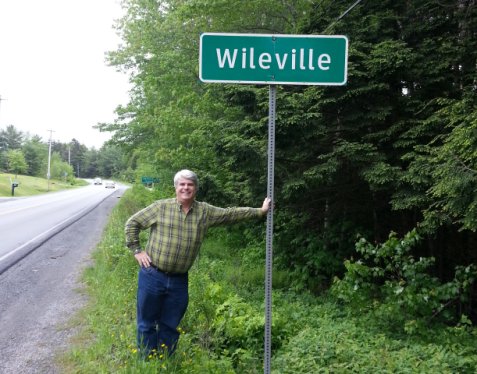
My Canadian tour came to a close in Nova Scotia, which actually has a place in my family’s history. My father’s ancestors came from Germany and settled there, forming a small town called “Wileville.” As you can see, I got a chance to visit there. It’s still a small town, and there wasn’t much there except for a market/bakery and a gas station. Nevertheless, it was cool to see that nearly every street was named after a Wile, and there was even a lake called “Wile’s Lake.”
Of course, the main reason I was in Nova Scotia was to speak at the HEMS Homeschool Convention. It was another intimate convention that was held at an excellent facility and run by a group of incredibly dedicated home educators. One of the things I loved about the convention was that in addition to a vendor hall (where curriculum providers sold curriculum to those who needed it), there was also a “young entrepreneurs” section where young people could sell things that they had made. There was a wide variety of things to buy, from candy to plants. I ended up buying some cards from a very talented young photographer who started a photography business called Gracious Vignettes.
I gave a total of six talks at the convention, five of which were on Saturday. That’s actually a lot of talking, and I even told the conference attendees that I expected to be bored with myself after giving so many talks. They were very gracious, however, thanking me over and over again for coming to their “little” convention. This seemed to be a theme at both of the conventions I spoke at in Canada. The organizers and even the attendees seemed to be constantly apologizing for how small their conventions were. They had heard of the mega-conventions in the U.S. and were sorry that their numbers couldn’t measure up.
I hope I was able to dispel them of this notion. I think that big conventions and small conventions both have a role to play in home education. Big conventions can bring in lots of great speakers, and their vendor halls are simply brimming with choices when it comes to educational material. However, they can’t be flexible. I remember when I spoke at the FPEA convention in May, Diana Waring and I had a great question from the audience, but before we were able to answer it, the hostess cut us off, because the convention had to stay on schedule. I completely understand why the hostess needed to do that, and it is a consequence of the convention being very large. In addition, I can’t spend a lot of time speaking with a single individual at a big convention. In both of my Canadian conventions, however, I had long discussions with several homeschoolers who needed a lot of advice, and I was never cut off in any of my talks. That’s the beauty of a small convention.
The HENB Conference in New Brunswick
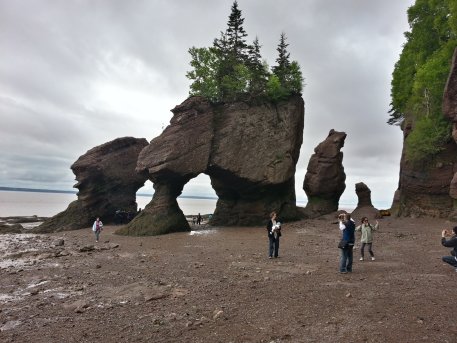
(Copyright Kathleen J. Wile, all rights reserved)
This past weekend, I spoke at the Home Educators of New Brunswick convention in Sussex, New Brunswick (Canada). It was an intimate, well-organized conference with many wonderful people. I spoke a total of five times, once on Friday night and four times on Saturday. Even though they are in another country, Canadians face many of the same problems with their education system that we in the U.S. face with ours. In fact, three of the talks I gave at this convention were “Canadian versions” of the talks I give here at home. They cover the same issues, but they use Canadian statistics rather than U.S. statistics. Nevertheless, the conclusions are very similar.
For example, one of my favorite talks is the one I give about homeschool graduates and what they are doing now. This link is the handout for the U.S. version of the talk, while this link is the one for the Canadian version. Even though the Canadian version contains only Canadian statistics and mostly the stories of individual Canadian homeschool graduates (with a few from the U.S. and New Zealand thrown in for good measure), you can see that the conclusions are really the same: Homeschool graduates are doing wonderfully well and are really making a difference in the world.
Of course, one of the great things about speaking at a convention in another country is that it gives you a chance to do a bit of sightseeing as well. My wife traveled up to New Brunswick after the conference was over, so she and I are traveling around enjoying the lovely countryside. The picture at the top of this post, for example, was taken at Hopewell Cape in the Bay of Fundy. I will write more about that in my next blog post.
As always, I was asked several wonderful questions after my talks and while I was in the exhibit hall.
The FPEA Convention
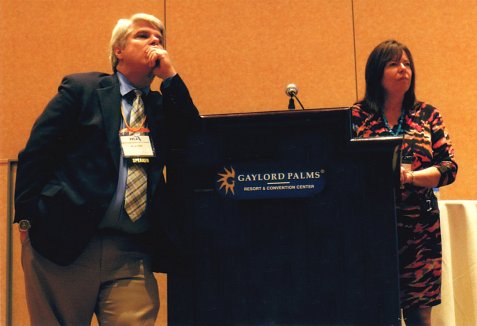
Last Friday and Saturday, I spoke at the Florida Parent-Educators Association (FPEA) convention in Orlando, Florida. It is one of the largest homeschooling conventions in the United States, and it is held at an incredible venue (the Gaylord Palms Resort). The convention was made doubly-special for me because I went early and was able to do a unique scuba dive: I got to dive in the Epcot Center’s “Living Seas” aquarium. You can see pictures of it on my Facebook page.
I gave six talks at the convention, including two with Diana Waring. The picture at the top of this post was taken during our first talk, “Homeschooling: The Environment for Genius,” which is based on a study of the childhoods of several geniuses. The picture at the top of the post comes from the question/answer session of that talk. In fact, one of the more interesting questions of the convention came during that time.
A homeschooling mother stood up and asked the following: Because geniuses tend to think outside the box, they are often noticeably different from their peers, and that can produce all sorts of negative consequences. If we do have children who are geniuses, how do we deal with those consequences? Unfortunately, our time had expired by then, and a conference official cut us off before we could answer that question. However, I went down to her, and a crowd gathered around us to hear the answer, which you will find below.
The Sioux Empire Christian Home Educators Convention
This past weekend, I spoke at the Sioux Empire Christian Home Educators (SECHE) convention. It was a small convention, but it was well-organized and full of enthusiasm. While I can understand the draw that large conventions have (lots of speakers, all manner of curriculum and resources in the vendor hall, etc.), there are a lot of advantages to small conventions as well. I got to spend a lot of time with each individual who wanted to speak with me personally, and there was plenty of time in each session for everyone to have their questions answered. The “personal touch” that is available at smaller conventions simply can’t be experienced at the larger ones.
I gave a total of five talks at the convention, including Homeschooling: Discovering How and Why It Works. In that talk, I give lots of statistics regarding students who are educated at home. For example, I discuss the Rudner study, which found that at every grade level, the average homeschooled student scored better on standardized tests than the average privately-schooled student, who in turn scored better than the average publicly-schooled student. It also shows that the average publicly-schooled student lags farther and farther behind the the older he or she gets. From an academic standpoint, then, it is more important to avoid public school in the junior high and high school years than it is in the elementary years.
In addition, I show Rudner’s comparison between students who are homeschooled every year of their K-12 education and those who are homeschooled for only some of those years. While there is no difference (on average) between the two groups in the elementary years, by the time the students are in junior high and high school, those who did not stay in homeschool lag behind those who are homeschooled every year. To me, this indicates that homeschoolers make the most academic gains in the junior high and high school years. I like the Rudner study, because the author was initially a skeptic of home education, thinking that home educators were a bunch of “conservative nuts.”
After I discuss the data related to homeschooled students, I switch to the data related to homeschool graduates. I show several studies that clearly demonstrate that homeschool graduates excel at the university level compared to their publicly- and privately-schooled peers (see here, here, and here, for example). This led to a very interesting question from an audience member.
Continue reading “The Sioux Empire Christian Home Educators Convention”

